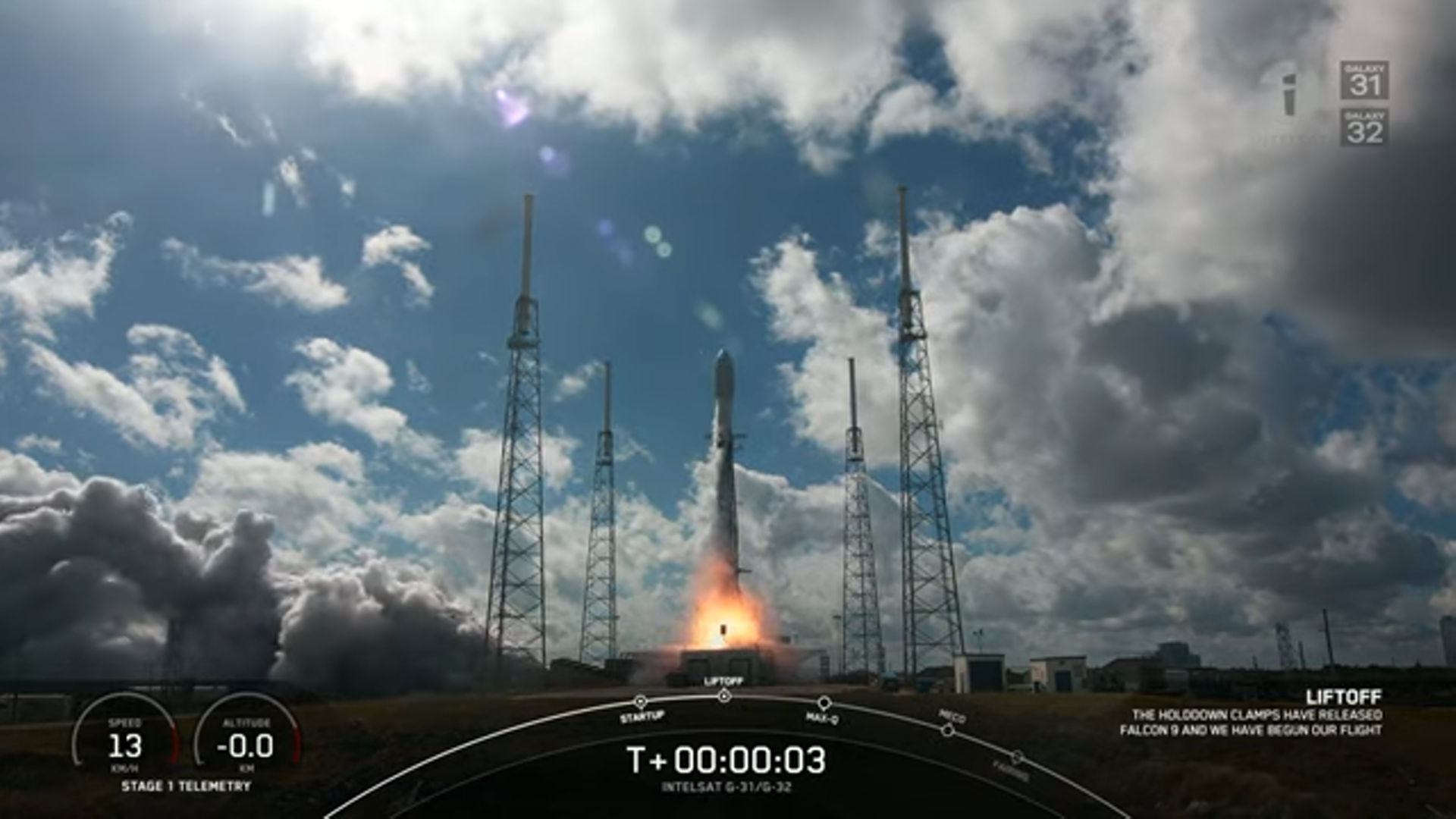
After an illustrious career spanning almost four years and a record-tying 14 missions, SpaceX’s longest-serving Falcon 9 booster core has finally bowed out of service. B1051, first flown back in March 2019 to loft an unoccupied Crew Dragon on the historic Demo-1 mission to the International Space Station (ISS), launched for the final time from storied Space Launch Complex (SLC)-40 at Cape Canaveral Space Force Station, Fla., at 11:06 a.m. EST Saturday, 12 November.
Laden with a pair of powerful geostationary-bound communications satellites flying on behalf of Intelsat, the mission’s high-energy needs required B1051 to be expended after this flight. Launch was delayed four days past its original placeholder date of Tuesday, 8 November, in response to poor weather associated with Hurricane Nicole.
It has been an astonishingly successful 44 months since B1051 first roared into the night in the wee hours of 2 March 2019. At that point in time, no Falcon 9 core had ever been flown more than three times, but across her career B1051 became the first in the fleet to record eighth, ninth, tenth, 11th and 12th missions.
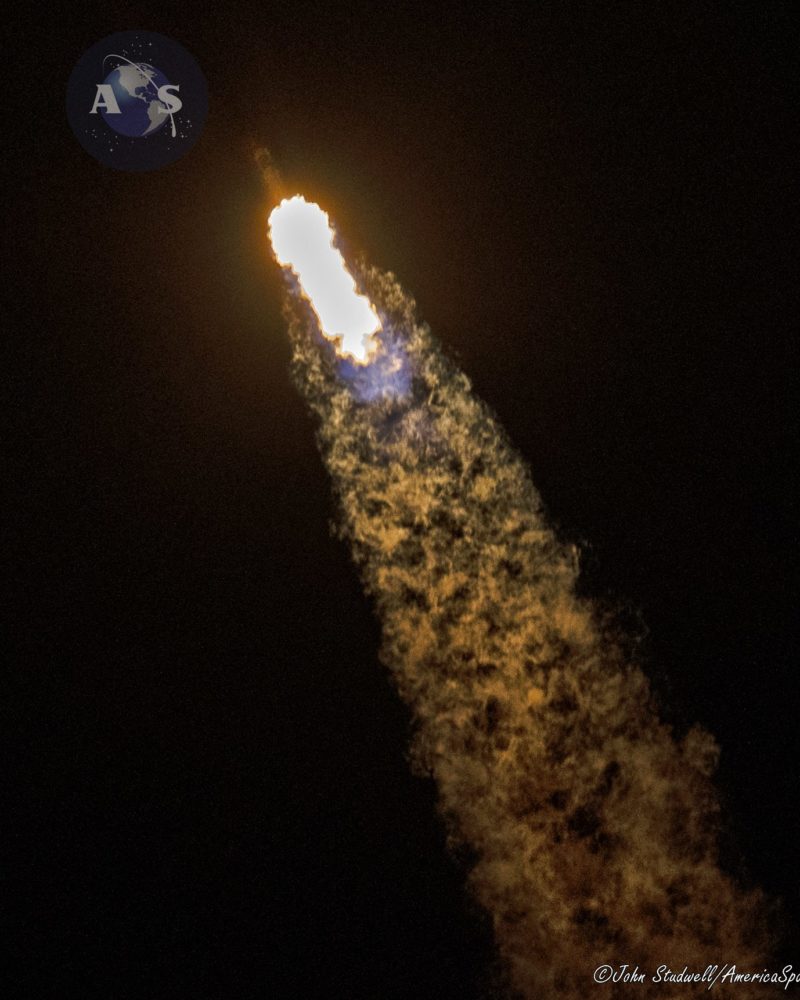
Only earlier this summer was she overtaken by two of her sister Falcons in getting first past the post on 13th and 14th launches. Across that bundle of years, B1051 lifted no less than 575 Starlink low-orbiting internet communications satellites, on ten dedicated missions, most recently last July.
She also ferried Demo-1, Canada’s three-spacecraft Radarsat Constellation Mission (RCM) in June 2019—her first of two outings from Vandenberg Space Force Base, Calif.—and SiriusXM’s high-powered SXM-7 geostationary broadcasting satellite in December 2020. Two of her 14 missions originated from Vandenberg and the remainder from the Space Coast.
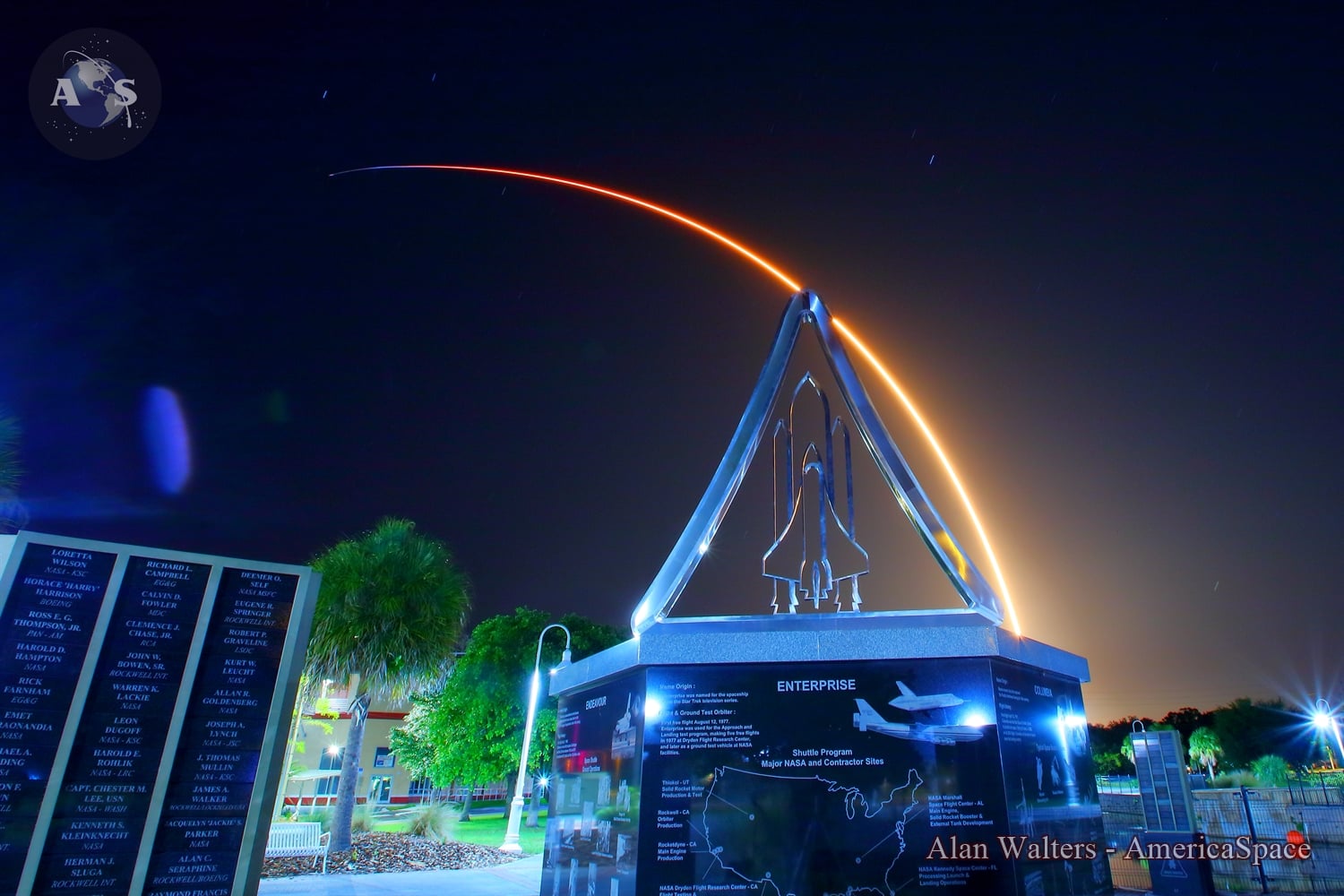
B1051 flew six times apiece from the Cape’s SLC-40 and six more from historic Pad 39A at the Kennedy Space Center (KSC). Twelve flights terminated on SpaceX’s Autonomous Spaceport Drone Ship (ASDS)—seven times on “Of Course I Still Love You”, five times on “Just Read the Instructions”—whilst the RCM mission ended with an on-point touchdown on solid ground at Landing Zone (LZ)-4 at Vandenberg.
But Tuesday’s 14th launch for B1051 would be her last. This was demanded at least part by the high-energy requirements of her primary payload, the dual-stacked Galaxy 31/32 communications satellites, flying on behalf of McLean, Va.-headquartered satellite services provider Intelsat.
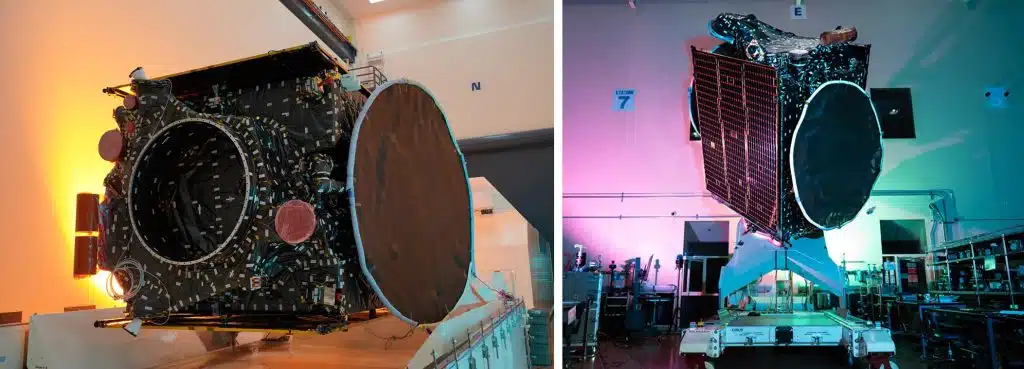
Contracts to build a total of five satellites—Galaxy 31, 32, 35 and 36—were awarded to Westminster, Colo.-based Maxar Technologies, Inc., in June 2020, in furtherance of the Federal Communications Commission (FCC) directive to reallocate 300 megahertz of C-band spectrum to 5G terrestrial wireless services by December 2023.
The dual-stacked Galaxy 35/36 twins will ride a European Ariane 5 booster out of Kourou, French Guiana, in the mid-December timeframe. Two others, the Galaxy 33/34 twins, built by Northrop Grumman Corp., were launched via a SpaceX Falcon 9 out of Cape Canaveral Space Force Station just last month.
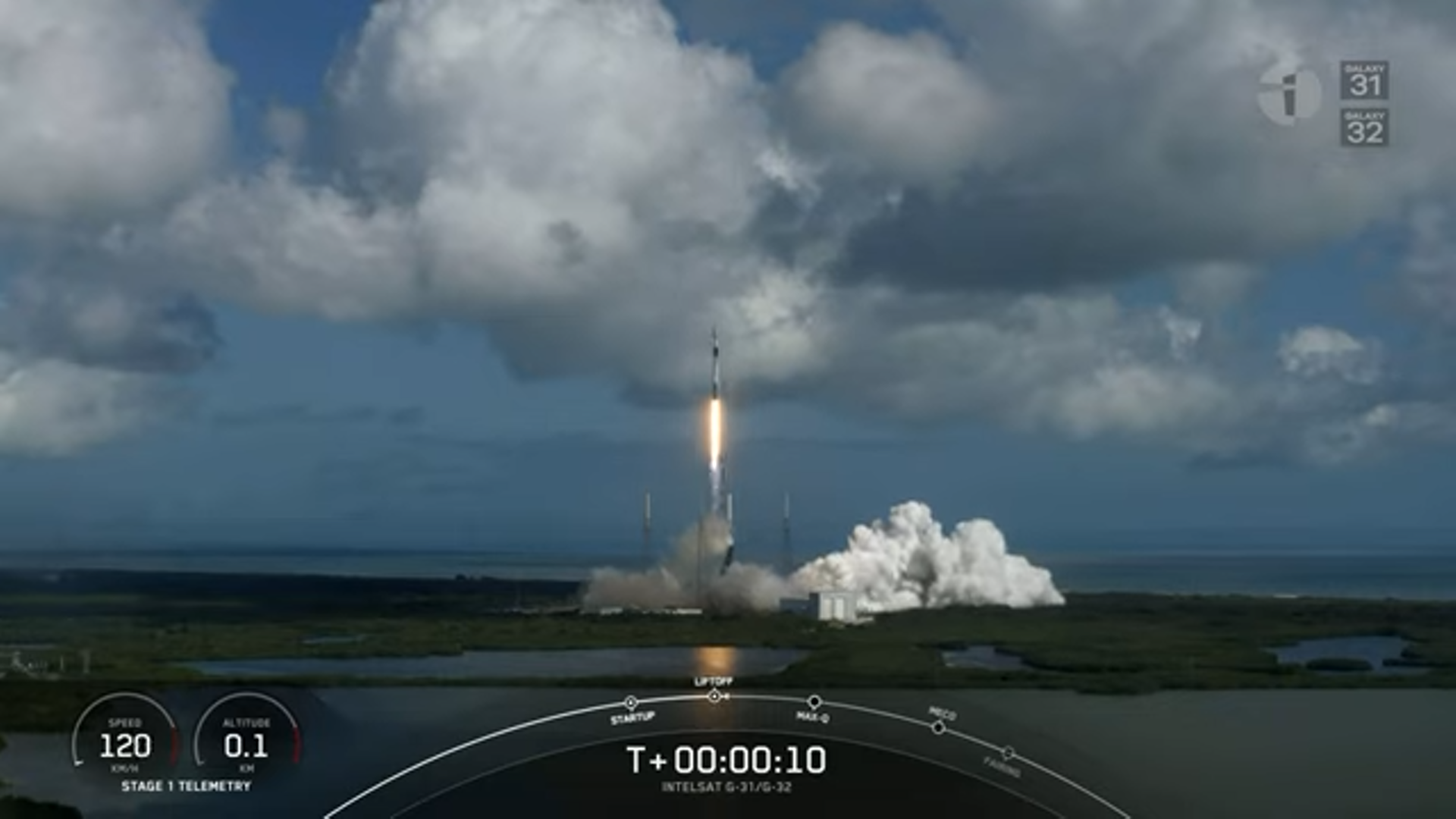
And another, Galaxy 37, contracted to Maxar back in September 2020 and previously earmarked for an Ariane 5 launch, will now fly a Falcon 9 in the third quarter of 2023.
Both Galaxy 31/32 are based upon Maxar’s proven SSL-1300 “bus”, capable of supporting a payload power up to 12 kilowatts, up to 70 transponders and a spacecraft mass that tops-out at 12,000 pounds (5,500 kilograms). The two satellites arrived on the Space Coast for pre-flight processing in mid-October.
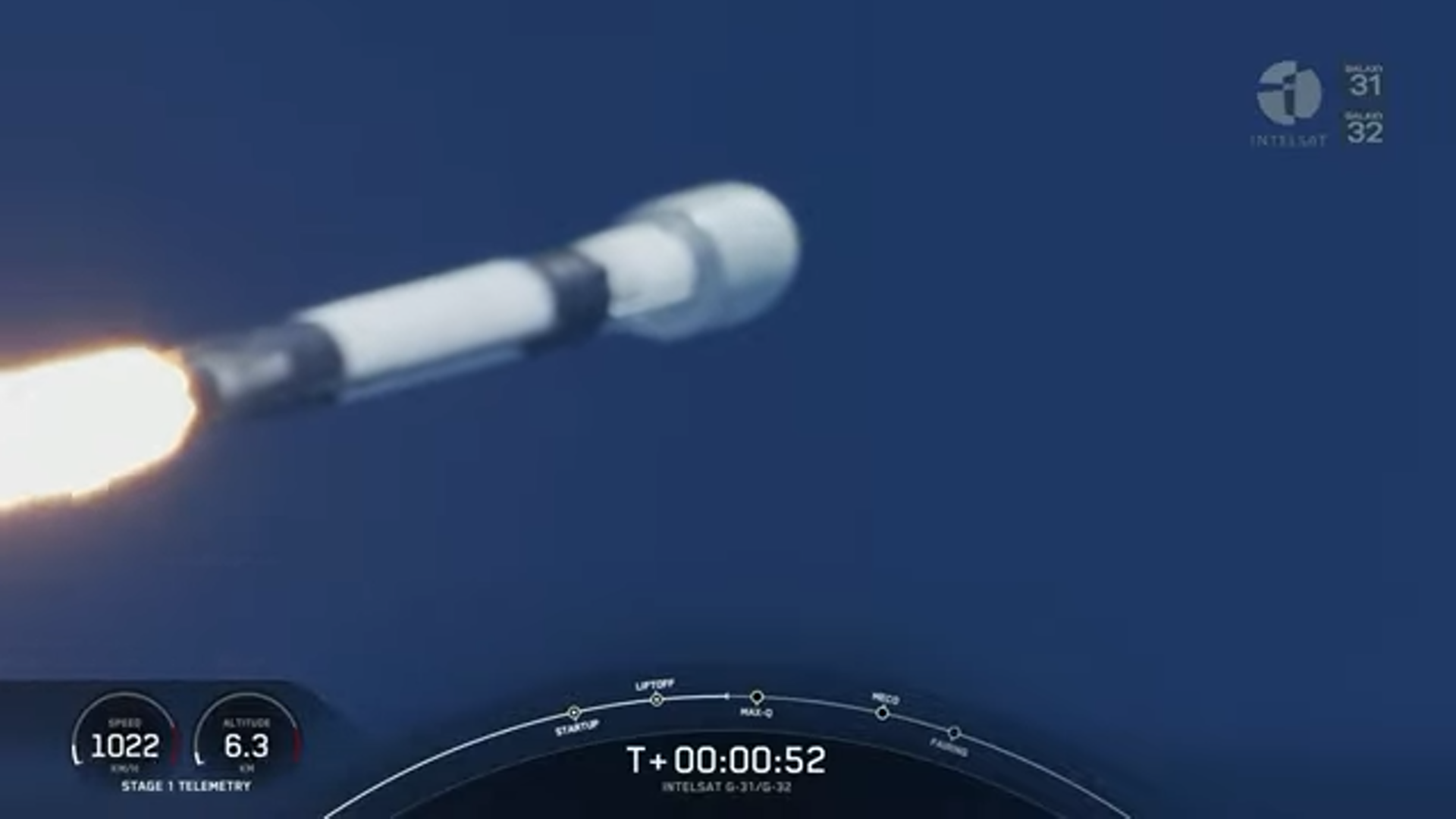
Weather conditions for Tuesday’s opening launch attempt—the third SpaceX mission of November, following last week’s launches, a mere two days apart, of a Falcon Heavy with the highly secretive USSF-44 payload for the U.S. Space Force and a “single-stick” Falcon 9 carrying the Hotbird 13G geostationary-bound communications satellite—were predicted to be around 30-percent favorable, deteriorating slightly to 20 percent in the event of a 24-hour scrub to Wednesday.
“A strong high-pressure area remains anchored north of Bermuda, while a low-pressure area with some tropical characteristics is forming near Hispaniola,” noted the 45th Weather Squadron at Patrick Space Force Base in an update last weekend.
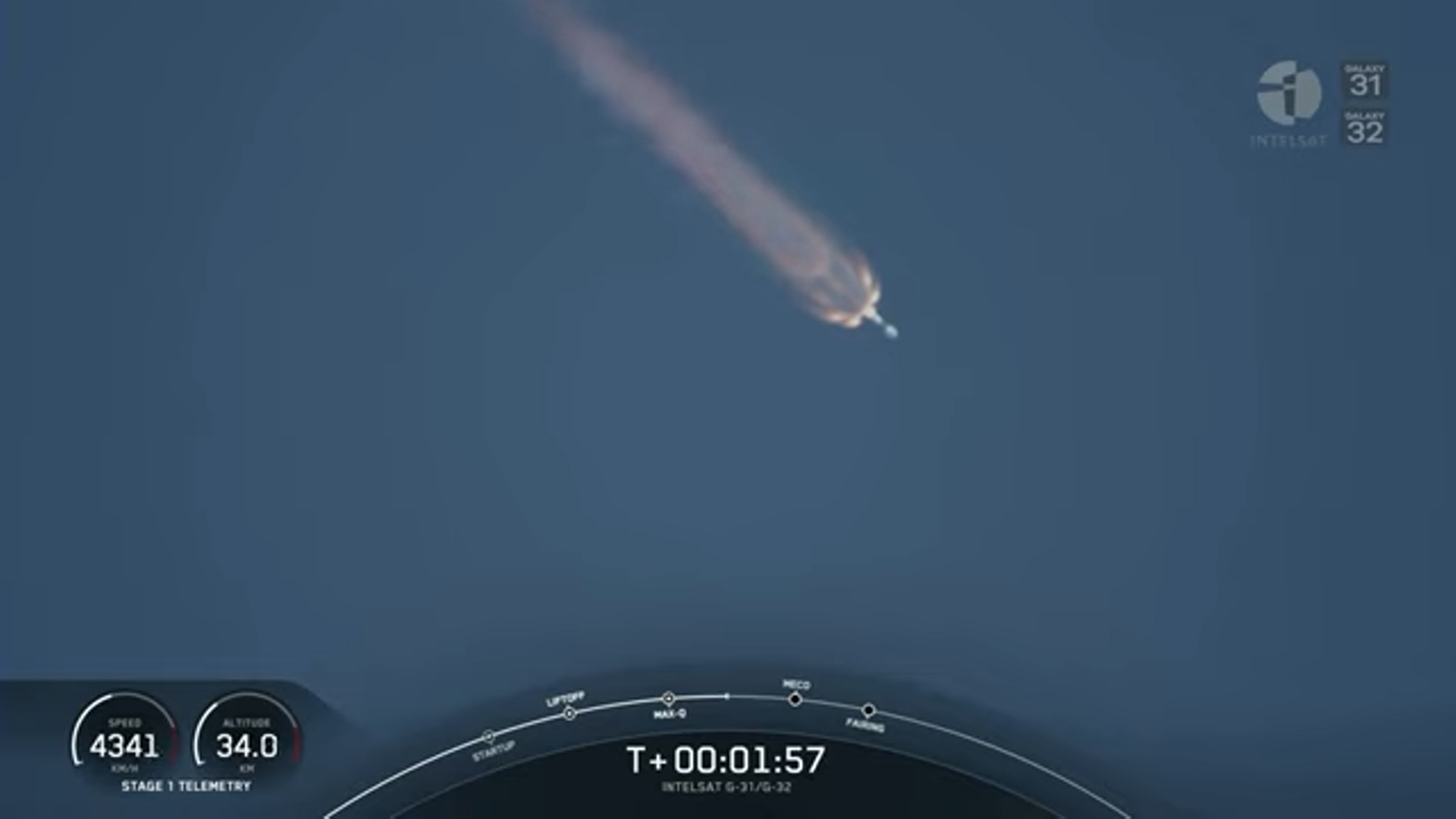
“The interaction of these two systems will create strong onshore flow with occasional fast-moving showers, mostly in the overnight and early morning hours,” it added. “On Tuesday, the low should reach its northernmost position, east of the Central Bahamas.”
All told, this was expected to impede B1051’s final launch with a risk of violating the Cumulus Cloud Rule and Liftoff Winds Rule. And by Wednesday, the added complication of potentially violating the Disturbed Weather Rule—as the low-pressure area moves towards South Florida, with greater chances of showers—offered a still murkier picture.
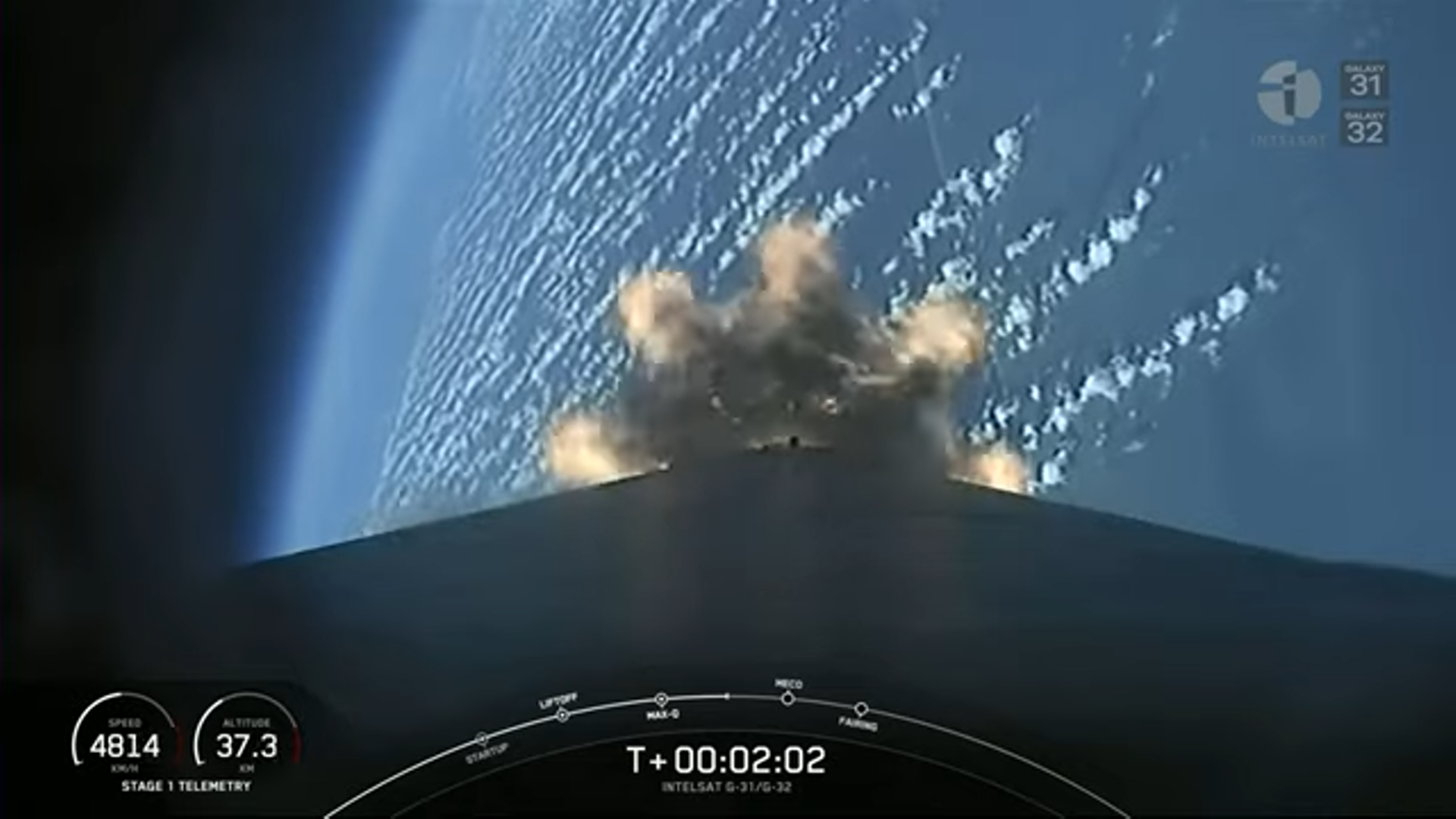
Launch was originally targeted for Tuesday, 8 November, but SpaceX announced a postponement until no sooner than Saturday, 12 November, in response to the anticipated progress of Tropical Storm (later Hurricane) Nicole. “The vehicle and payload are secure in the hangar,” it noted on 7 November, “and will remain there through the duration of the storm.”
Nicole originated as a subtropical cyclone last week, near the Greater Antilles, quickly evolving into a tropical cyclone by Tuesday, 8 November. A day later, it made landfall in the Bahamas, before impacting Florida’s east coast. Recategorized as a Category 1 hurricane, Nicole exhibited peak sustained winds of 75 mph (120 km/h).
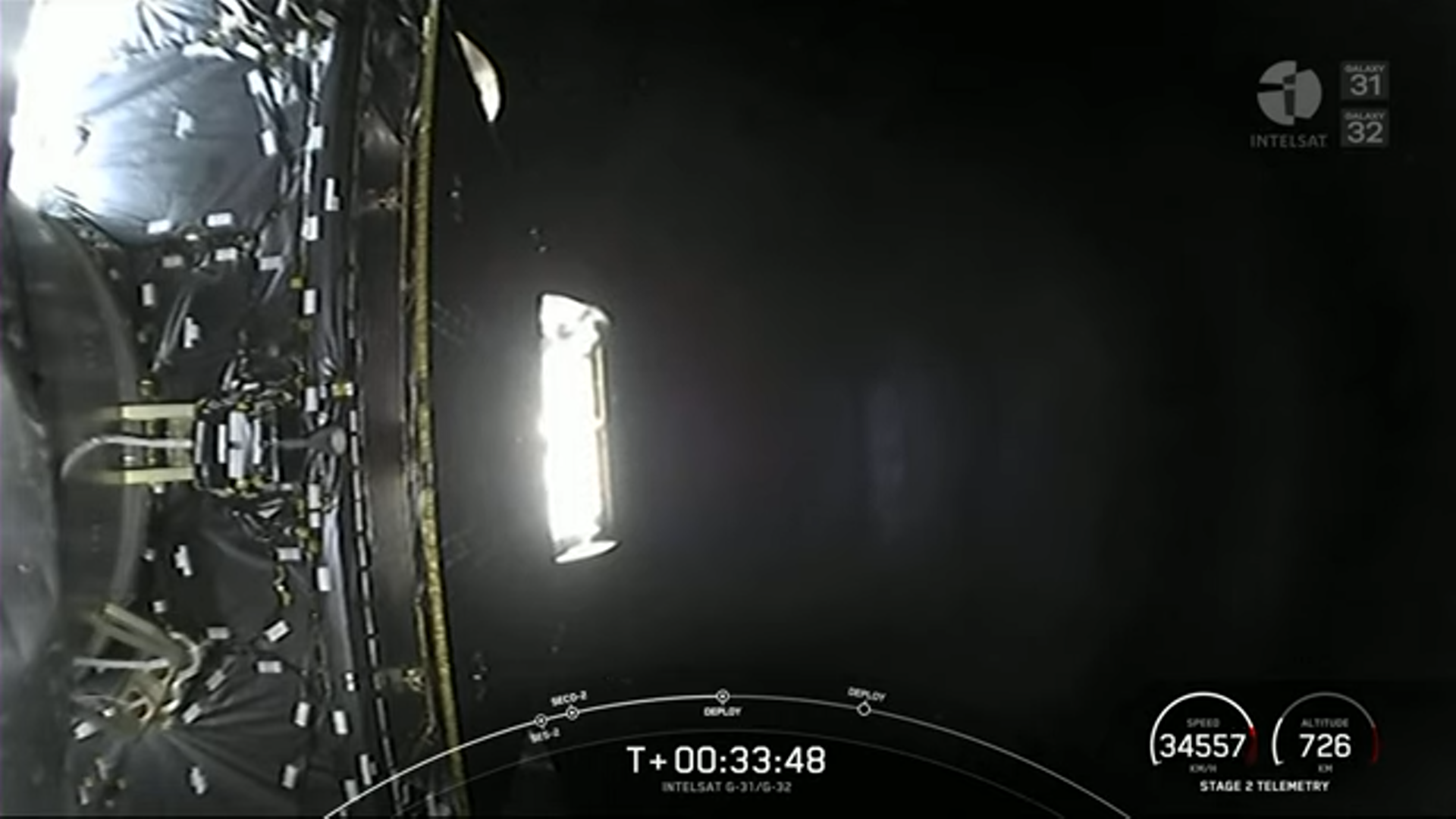
Liftoff at 11:06 a.m. EST Saturday was perfect, as the blackened and scorched B1051, sadly lacking both hypersonic grid-fins and landing legs, powered uphill for the last time under the 1.5 million pounds (680,000 kilograms) of thrust from her nine Merlin 1D+ engines.
Two and a half minutes into the flight, her final duty done, she separated from the stack and headed for a watery tomb in the Atlantic Ocean. Her final impact point was targeted some 530 miles (860 kilometers) downrange of the launch site which had been her home base for so long.
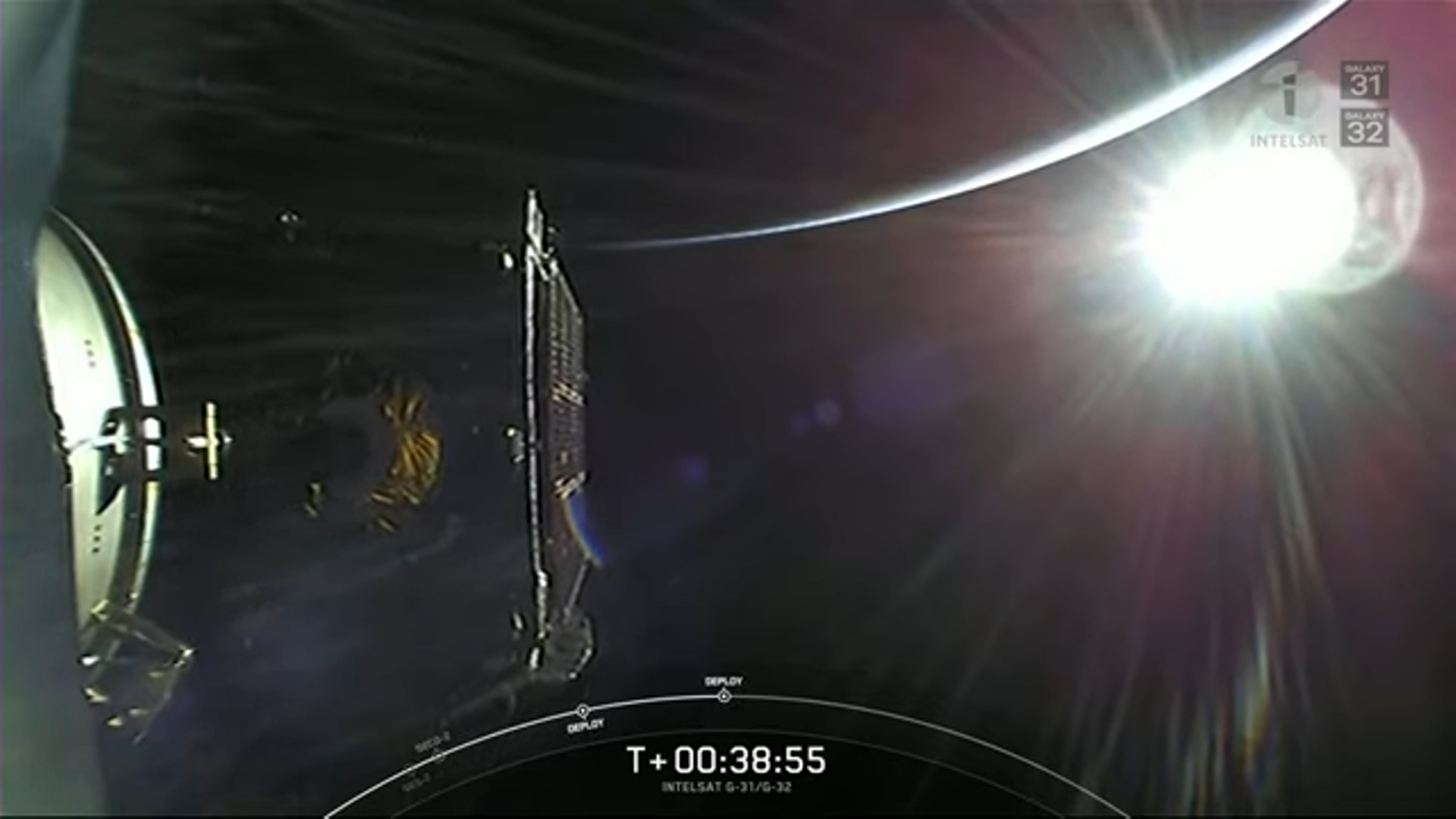
Meanwhile, the single Merlin 1D+ Vacuum engine of the Falcon 9’s second stage picked up the baton to heave the Galaxy 31/32 twins on the next leg of their trek towards geostationary altitude.
Following deployment at 32 minutes (Galaxy 32) and 38 minutes (Galaxy 31) into flight, the satellites will utilize their on-board propulsion systems to lift themselves into their targeted orbital “slots”: Galaxy 31 at 121 degrees West longitude, Galaxy 32 at 91 degrees West longitude.




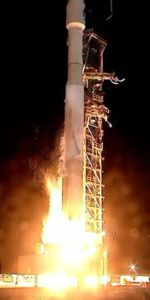
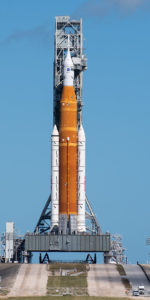
Any footage of it hitting the ocean?